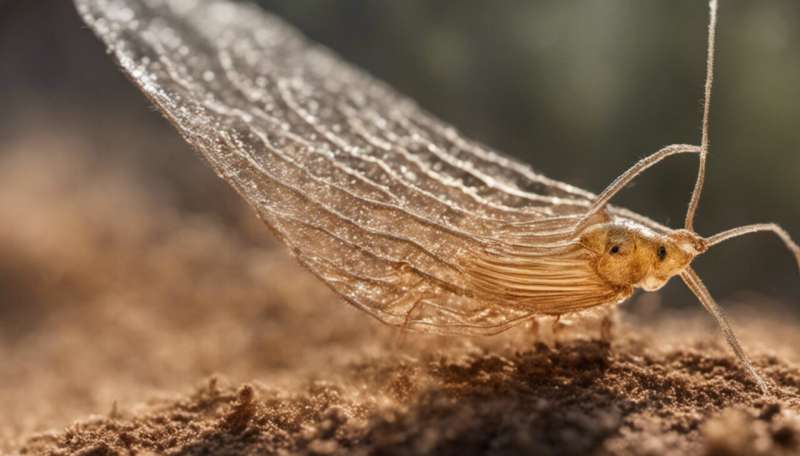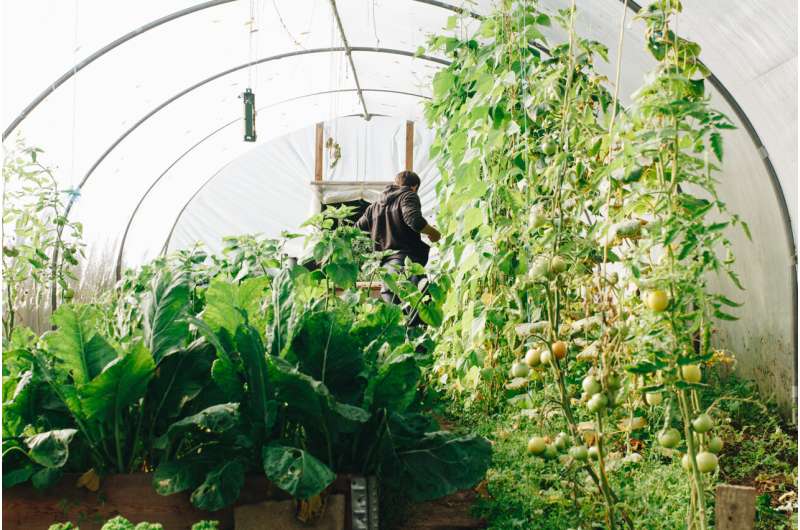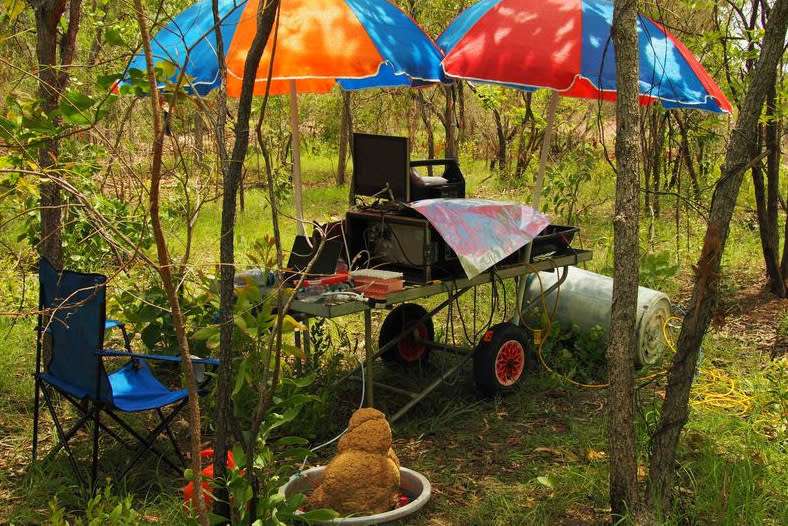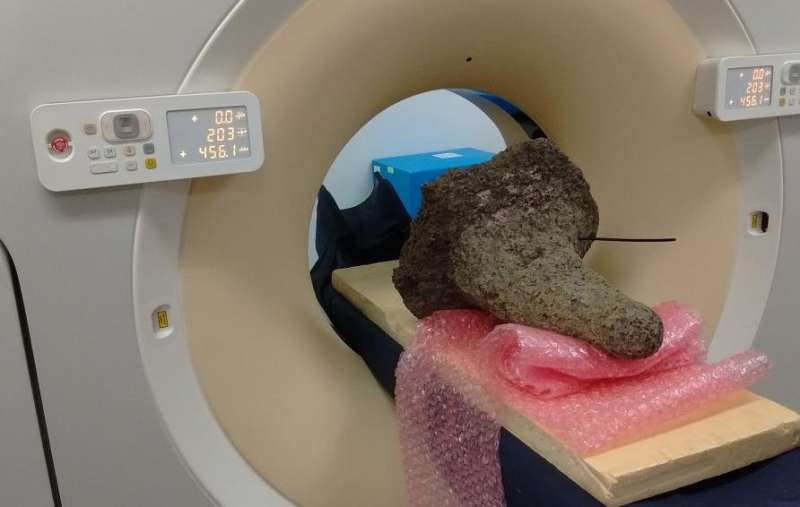How a termite's mound filters methane—and what it means for greenhouse gases

Cows do it, sheep do it, even digesting deer do it.
And termites do it too. Yes, termites fart.
Just like cattle and other ruminants (that is, an animal that brings up food from its stomach and chews it again), termites have bacteria in their guts that break down plant material. And just like cattle and other ruminants, one of the by-products of this breakdown is methane.
Methane is a greenhouse gas about 30 times more potent than carbon dioxide, and increasing industrial and agricultural emissions are a major contributor to global warming.
Globally, it is estimated that termites are responsible for about one to three per cent of all methane emissions. It may sound small, but that's up to 20 million tonnes of methane each year coming out the rear ends of these humble insects.
However, unlike us humans, termites have a built-in filter system in their dwellings to remove this greenhouse gas before it's emitted into the wider atmosphere.
A team of researchers led by Dr. Philipp Nauer from the School of Ecosystem and Forest Sciences at the University of Melbourne has developed new techniques to understand all levels of the methane cycle in termite mounds in the tropical north of Australia.
In the study, published in PNAS, they found that around half of all methane emitted from termites is broken down by bacteria within the termite mounds and underlying soil before it enters the atmosphere.
This is good news for the planet, and it also makes a lot of sense biologically speaking.
This is because methane is an energy source, says Professor Stefan Arndt, also from the University of Melbourne, who was a co-author on the study, alongside Professor Lindsay Huntley from Charles Darwin University.

A group of bacteria called methanotrophs live in the soil and consume methane as their primary source of energy.
"They are in your garden soil, in your city soil, in the forest, they are even in agricultural soils," says Professor Arndt.
"Logic would tell you there should be these methanotrophic bacteria also in the termite mounds, because they are everywhere."
It's difficult to accurately measure how much methane is produced by a termite mound, and Dr. Nauer and his colleagues had to develop some innovative techniques to sniff it out.
"The challenge is that you have all three processes in the methane cycle – production, transportation and consumption – at the same time and place," says Dr. Nauer.
"In soils with a methane source, for example rice paddies, you often have separate zones where you have methane production or methane consumption, with transport between them, but in termite mounds it's a lot more complex. You don't know where the termites are, so you don't know where the production is at.
"The other challenge is the structure of the mound itself. It's not a uniform structure, it has complex networks of chambers and channels and different porosities depending on where on the mound you look."
The three processes (production, consumption and transport) are key to understanding the dynamics of termites' methane cycle, and their contribution to atmospheric greenhouse gases.

"By putting a chamber over the mound we can measure the net transport of methane to the atmosphere relatively easily," says Dr. Nauer.
Measuring the methane production and consumption in the mound is more complicated. For his calculations, Dr. Nauer needed to know the total volume of gas in the mound.
"When I started this project, there was no proper method for measuring even the outer volume of a mound," he says.
"We developed a photogrammetric record, where we took photos at many different angles and then calculated the 3-D structure with software—this can measure the volume of the mound very precisely."
To see inside the mounds, Dr. Nauer needed to make a friend in the local medical community.
"The key was to get a reference method for the inner volume of the mound, the fraction of chambers versus solid material, so we wanted to do CT scans of the mounds," he says.
"When I started phoning around in Darwin for medical imaging centres, I assumed they would say no, or there was a waiting list of several months.
"Instead there was this radiographer, the first one I called, who just said, 'Oh cool, termite mounds. I always wanted to do this. Bring them in'."

To calculate how much methane was being consumed by the bacteria in the mound, the researchers slowly injected a known amount of methane into the mound, along with an inert 'tracer gas', argon, and then sucked it back out again.
The difference in the two gases showed how much methane was consumed.
Across 29 mounds made by three different termite species, the team found, on average, half of all methane was consumed by methanotrophs before it entered the atmosphere.
"Some mounds were actually consuming methane from the atmosphere, and some mounds were massive sources, but throughout this whole scale, the percent of the methane that gets consumed is very stable," says Dr. Nauer.
"The range was 20 to 80 per cent, but most mounds have an oxidation fraction of around 40 to 60 percent, so we think this 50 percent is something that is inherently built in, because the system sort of buffers itself. If you have more production, you get more consumption."
So, what does this mean for global methane levels?
"The challenge there is upscaling," says Dr. Nauer.
"So how do you go from measurements of one mound to the whole world? What people have done is guesstimated the total global biomass of termites and then, by applying an emission factor, they came up with these numbers for the contribution to the global methane budget.
"Our research could improve these estimates of the emission factor. They could also improve the biomass estimates."
By turning the relationship between termites and methane emissions upside down, the team could estimate the number of termites inside a mound from measuring how much methane was emitted.
Professor Arndt says these methods will help better understand the ecology of these important but poorly understood creatures.
"Now with the methods that Dr. Nauer has developed and applied to these termite mounds, you get a really good idea about how many termites are actually inside," he says.
"So, you can look at seasonality of populations, and this is something that isn't well known. We don't really know that much about the ecology of these species, because they are really good at hiding."
As it turned out, sniffing out the methane also helped sniffing out the termites.
More information: Philipp A. Nauer et al. Termite mounds mitigate half of termite methane emissions, Proceedings of the National Academy of Sciences (2018). DOI: 10.1073/pnas.1809790115
Journal information: Proceedings of the National Academy of Sciences
Provided by University of Melbourne





















